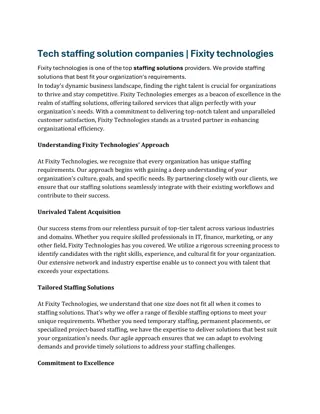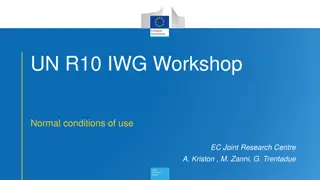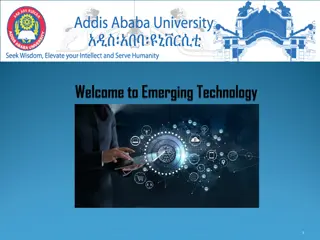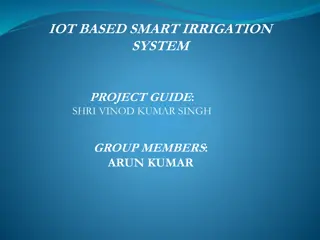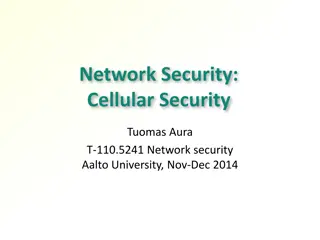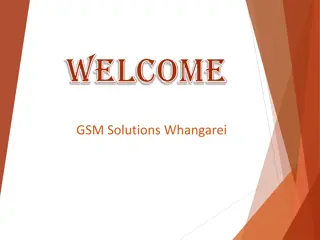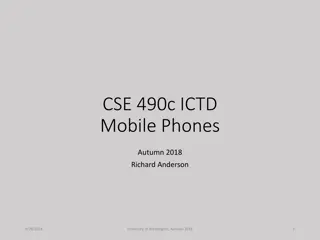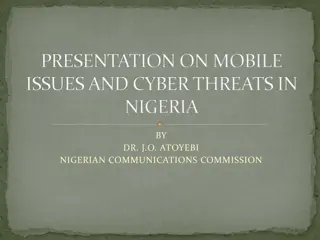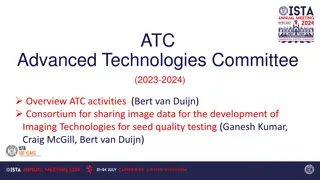Understanding GSM Technologies: A Comprehensive Overview
Global System for Mobile (GSM) is a second-generation cellular standard that revolutionized voice and data services. This presentation delves into the architecture, history, and evolution of GSM, detailing its various subsystems and functionalities. Explore the key elements such as Mobile Station, Base Station, and more, to grasp the foundation of wireless networks. Discover the significance of GSM in the mobile communication industry and its impact on modern telecommunication systems.
Download Presentation

Please find below an Image/Link to download the presentation.
The content on the website is provided AS IS for your information and personal use only. It may not be sold, licensed, or shared on other websites without obtaining consent from the author. Download presentation by click this link. If you encounter any issues during the download, it is possible that the publisher has removed the file from their server.
E N D
Presentation Transcript
JEPPIAAR INSTITUTE OF TECHNOLOGY Self-Belief | Self Discipline | Self Respect Department of Electronics and Communication Engineering SUBJECT NAME: WIRELESS NETWORK PRESENTATION TITLE:GSM TECHNOLOGIES-ARCHITECTURE Team Members: Students Name Reg.No: 1.AKASH.B 210617106005 2.AKASH.U 210617106006 3. AMARAN.E 210617106008 4. VIJAYANAND.R 210617106089 5. AISHWARYA.V 210617106002 6. BHAVANISHRUTHI.S 210617106019 1 7.DINU.J 210617106025
OBJECTIVES The Overview of GSM Architecture has a brief explanation of the different networks subsystems and description of the functionality of the elements within each of the subsystems. The evaluation and generation of GSM explained The general architecture like Mobile Station, Base Station and The Networking system are explained 2
GSM Global System For Mobile(GSM) is a second generation cellular standard developed to cater voice services and data delivery using digital modulation GSM digitizes and compresses data,then sends it don a channel with two other streams of user data ,each in its own time slot.It operates at either the 900 megahertz(MHZ)or 1800 MHZ frequency band 3
GSM HISTORY GSM HISTORY Developed by group speciale mobile(founded 1892) which was an initiative of CPET(Conference of European Post and Telecommunication) Under ETSI,GSM is named as Global System for Mobile Communication in 1989 Full set of specifications phase-I became available in 1990 Phase 2 of the GSM specifications occurs in 1995.Coverage is extended to rural areas 4
The Evolution Of GSM The Evolution Of GSM 1G -Analogue cellular phones -NMT,AMPS 2G -Voice and data signals -Digital Fidelity Cellular phones -GSM,CDMA,TDMA 3G-Voice,Data and videos signals -Video Telephony/Internet Surfing -3G,W-CDMA,UMTS 4G -Enhanced 3G/Interoperability Protocal -High speed and IP-based -4G,mobile IP -Voice Signals only 5
GSM ARCHITECTURE GSM ARCHITECTURE 7
GSM ARCHITECTURE AND ITS TYPES GSM ARCHITECTURE AND ITS TYPES Mobile Station(MS) Mobile equipment(ME) Subscriber Identity Module(SIM) Base Station Subsystem(BSS) Base Transceiver Station(BTS) Base station controller(BSC) Networking Switching Subsystem(NSS) Mobile Switching Center(MSC) Home Location Register(HLR) Visiter Location Register(VLR) Authentication Center(AUC) Equipment Identity Register(EIR) 8
MOBILE STATION(MS) MOBILE STATION(MS) Mobile stations (MS), mobile equipment (ME) or as they are most widely known, cell or mobile phones are the section of a GSM mobile communications network that the user sees and operates. There are a number of elements to the cell phone,Although the two main elements are the main hardware and the SIM Main Hardware The hardware itself contains the main elements of the mobile phone including the display, case, battery, and the electronics used to generate the signal, and process the data receiver and to be transmitted. Subscriber Identity Module(SIM) Smart card contains IMSI Allows user to send and receive calls. Protected by a password or pin Can be moved from phone to phone 9
Base Station Subsystem(BSS) The Base Station Subsystem (BSS) section of the 2G GSM network architecture that is fundamentally associated with communicating with the mobiles on the network. It consists of two elements: Base Transceiver Station (BTS): The BTS used in a GSM network comprises the radio transmitter receivers, and their associated antennas that transmit and receive to directly communicate with the mobiles. The BTS communicates with the mobiles and the interface between the two is known as the Um interface with its associated protocols. Base Station Controller (BSC): The BSC forms the next stage back into the GSM network. It controls a group of BTSs, and is often co-located with one of the BTSs in its group. It manages the radio resources and controls items such as handover within the group of BTSs, allocates channels and the like. It communicates with the BTSs over what is termed the Abis interface. 10
Networking Switching Subsystem(NSS) The GSM system architecture contains a variety of different elements, and is often termed the core network. It is essentially a data network with a various entities that provide the main control and interfacing for the whole mobile network. The major elements within the core network include: Home Location Registers(HLR) Permanent database about mobile subscribers in a large services ares (generally one per GSM network operator) Database contains IMSI,MSISDN,prepaid/postpaid,Rsoaming restrictions,Supplementray services Visitor Locations Registers(VLR) Temporary database which updates whenever new MS enters its area by HLR database Controls those mobiles roaming in its area and it also reduces the number of quries to HLR Database contains IMSI,TMSI,MSISDN,MSRN,Locations Area,Authentication key 11
Authentication Centre(AUC) The AuC is a protected database that contains the secret key also contained in the user's SIM card. It is used for authentication and for ciphering on the radio channel. SMS Gateway(SMS-G) The SMS-G or SMS gateway is the term that is used to collectively describe the two Short Message Services Gateways defined in the GSM standards. The two gateways handle messages directed in different directions. The SMS-GMSC (Short Message Service Gateway Mobile Switching Centre) is for short messages being sent to an ME. The SMS-IWMSC (Short Message Service Inter-Working Mobile Switching Centre) is used for short messages originated with a mobile on that network. 12
Advantages Of GSM Communication -Mobile,Wireless communication support for voice and data services Total mobility -International access,Chip-card enables use os access point of different providers Worldwide connectivity -One number the network handles every location High capacity -better frequency efficiency,Smaller cells,More customer per cells. High transmission quality -High audio quality and reliability for wireless,Uninterrupted phone calls at higher speeds(e.g.,from cars,trains) 13
Disadvantages of GSM Dropped and missed calls Less efficiency Security Issues 14
Applications of GSM Mobile telephony GSM-R Telemetry System -Fleet management -Automatic meter reading -Toll collection -Remote control and fault reporting of DG sets Value Added Services 15
Result and Discussion The mobile telephony industry growing and that has become backbone for business success and efficiency and a part of modem lifestyles all over the world In this session I have tried to give and over view of the GSM system. I hope that I gave the general flavor of GSM and the philosophy behind its design Cellular mobile radio-the high end sophisticated technology that enables every one to communicate anywhere with anybody. The GSM is standard that insures interoperability without stifling competition and innovation among the suppliers to the benefits of thr public both in terms of cost and services quality The features and benefits expected in the GSM systems are superior speech quality,Low terminal,Operational and service costs,High level security,providing international roaming support of low power hand portable terminals and variety of new services and network facilities 16
References [1] G. Gu, G. Peng, The survey of GSM wireless communication system , Computer and Information Application (ICCIA), 2010 International Conference on, Year: 2010, Pages: 121-124, DOI: 10.1109/ICCIA.2010.6141552 [2] M. Rahnema, Overview of the GSM system and protocol architecture , IEEE Communications Magazine, Year: 1993, Volume: 31, Issue: 4, Pages: 92- 100, DOI: 10.1109/35.210402 [3] P.L. Reilly, GSM network architecture issues for the next century , Vehicular Technology Conference, 1994 IEEE 44th , Year: 1994, Pages: 325- 329 vol.1, DOI: 10:1109/VETEC.1994.345111 [4] B. Mallinder, "An overview of the GSM system, "Proc. Nordic Seminar on Digital Band Mobile Radio Commun ., pp.12-15, Sept. 1988 [5] Jay Jayapalan and Mike Burke, Cellular Data services architecture and signaling , IEEE personal communication, second quarter , pp.44-55, 1994. [6] Khalid Al-Tawil, Ali Akarami, Habib Youssef. A New Authentication Protocol for GSM Networks . In IEEE 23rd Annual Conference on Local Computer Networks(LCN 98) (pp.21-30). [7] Michel Mouly & Marie-Bernadette Paulet, The GSM System for Mobile System 17
THANK YOU 18




